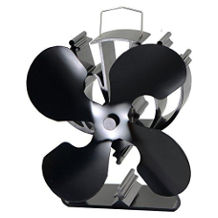Air cooler purchasing advice: how to choose the right product
- What You Need to Know
- The water tank is the central element of the air cooler. Its capacity can vary between 300 and 1,300 millilitres.
- In some models, the water tank also has space for ice cubes or cold packs.
- An air cooler works according to the evaporation principle. Here, the air gives off heat to the cold water inside; the air cools down and the water evaporates.
- The cooling capacity of the air cooler is not comparable to that of an air conditioner. Air coolers usually only reduce the room temperature by about three degrees Celsius.
- The purchase costs are manageable, depending on the model. Very inexpensive air coolers are already available from about 20 euros.
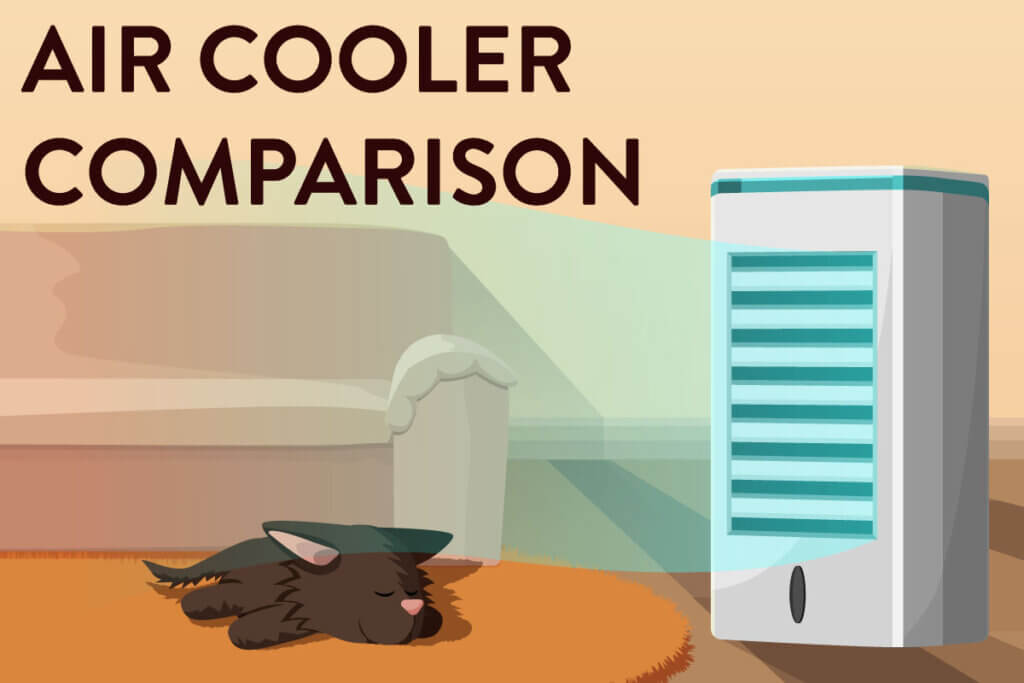
Air coolers in comparison
Air coolers are air conditioning systems in the broadest sense. Unlike classic systems, however, they are not permanently mounted, but can be used flexibly. There are various versions of practical air coolers on the market. They are often advertised as mobile air conditioners, even though they are technically only a cooling fan.
What is an air cooler?
Essentially, air coolers consist of a fan and a water tank. The water tank contains cold water, which needs to be checked regularly and refilled if necessary. The air cooler draws in air and cools it with the cold water in the tank. The cooled air is then blown back into the room by the fan. Air coolers can therefore be described as an optimised version of a simple fan. Some devices additionally offer the option of using cooling accumulators to further support the process. The real reduction in room temperature is usually around three degrees Celsius.
How does an air cooler work?
The evaporation effect is responsible for cooling the air. To do this, the warm air is led past the cold water or the cooling battery. Some devices also guide the air through a thin curtain of water to cool it down. Since the temperatures of air and water differ, there is a heat exchange. The warmer air transfers some of its heat to the cold water. The water evaporates and extracts heat from the passing air. As the air is cooled, it absorbs some of the cold water. This effect creates the pleasant coolness that comes out of the air cooler. However, if the room air drawn in has a high moisture content, it can only absorb a small amount of additional water. The cooling process is therefore inhibited and the performance of the air cooler decreases.
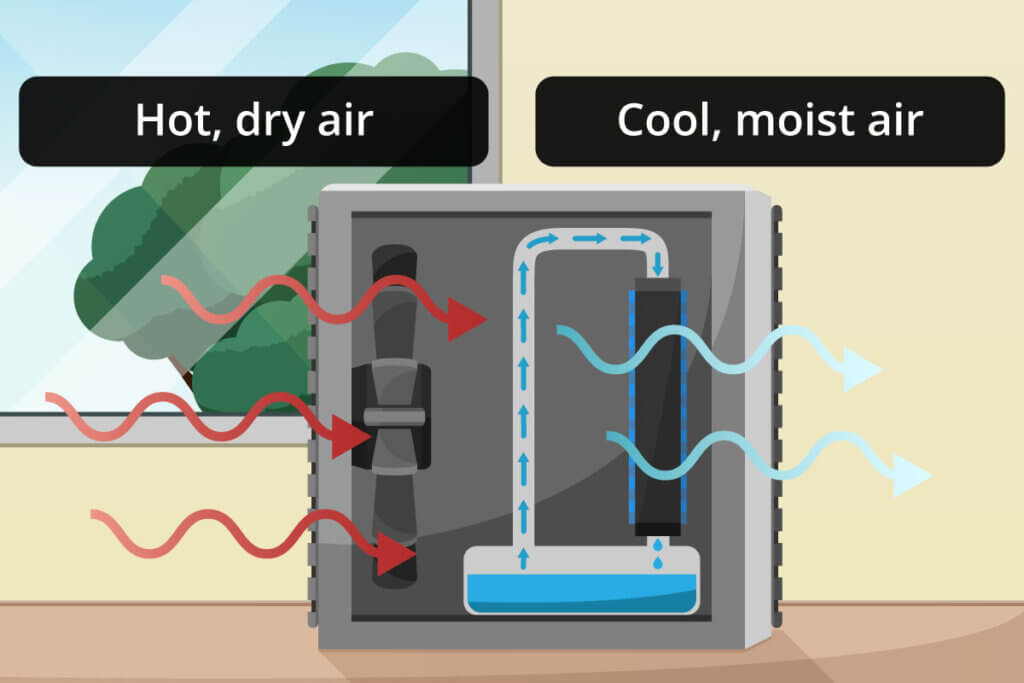
Who is an air cooler suitable for?
An air cooler is suitable for anyone who has to deal with high room temperatures, but cannot or is not allowed to install an air conditioning system. For those who are afraid of the costs of purchasing and maintaining an air conditioner, an air cooler is also a good alternative. The devices are very flexible: they can be used as desired in the house or flat. If you change the room, the air cooler can move with you without much effort. The so-called mini air coolers are the most compact; they even fit into a travel bag and can be used wherever and whenever you have a power connection. Air coolers are also a good option for environmentally conscious users, as no chemical coolant is used. Air coolers work exclusively with water and electricity.
What are the advantages of an air cooler?
Air coolers are simple in design. Usually, all you have to do is unpack them, fill their tank and connect them to the electricity. Air coolers can start working right away. Another advantage of these devices is immediately noticeable: Many are much quieter than a normal air conditioner. This feature is particularly advantageous on warm summer nights. Due to their low weight, air coolers can be used very flexibly. If you don’t want to buy a separate unit for each room, you can easily move them from one room to another. Many air coolers have wheels for precisely this purpose and can thus be moved even more easily. In addition to the low weight, the manageable power consumption is also an argument in favour of an air cooler. This allows the unit to run for a longer period of time without having to worry about high electricity costs.
Higher-quality devices have other useful features in addition to the simple cooling function. Higher-priced air coolers are often equipped with functions for humidifying or dehumidifying the air. This means they can be used all year round and support a sustainable improvement of the indoor climate. For allergy sufferers, there are models with particularly fine filters that remove pollen from the air.
What are the disadvantages of an air cooler?
Air coolers are not as efficient as air conditioners. The evaporation method works well, but it can only lower the temperature by a maximum of about three degrees Celsius. In addition, the effectiveness of an air cooler depends on the size of the room: A mini unit will already reach its limits in a 20 square metre room.
Pro points
- Low weight
- Quick and easy to install
- Can be used flexibly in the room
- Quieter than conventional air conditioners
- Manageable power consumption
- Partly with additional functions
Drawbacks
- Cooling only by a few degrees Celsius
- Effectiveness depends on room size
Areas of application of air coolers in everyday life
Air coolers are used in both the private and professional sectors. First and foremost are office rooms that need to be cooled quickly and easily in summer. Pleasant temperatures are one of the basic prerequisites for being able to work efficiently and with concentration.
In the private sector, air coolers can be used in all rooms. Compared to a normal air conditioner, they can be moved from room to room. Thus, a single unit is often enough to achieve a pleasant temperature in every room. Due to their low noise level, air coolers can even continue to run at night without any problems.
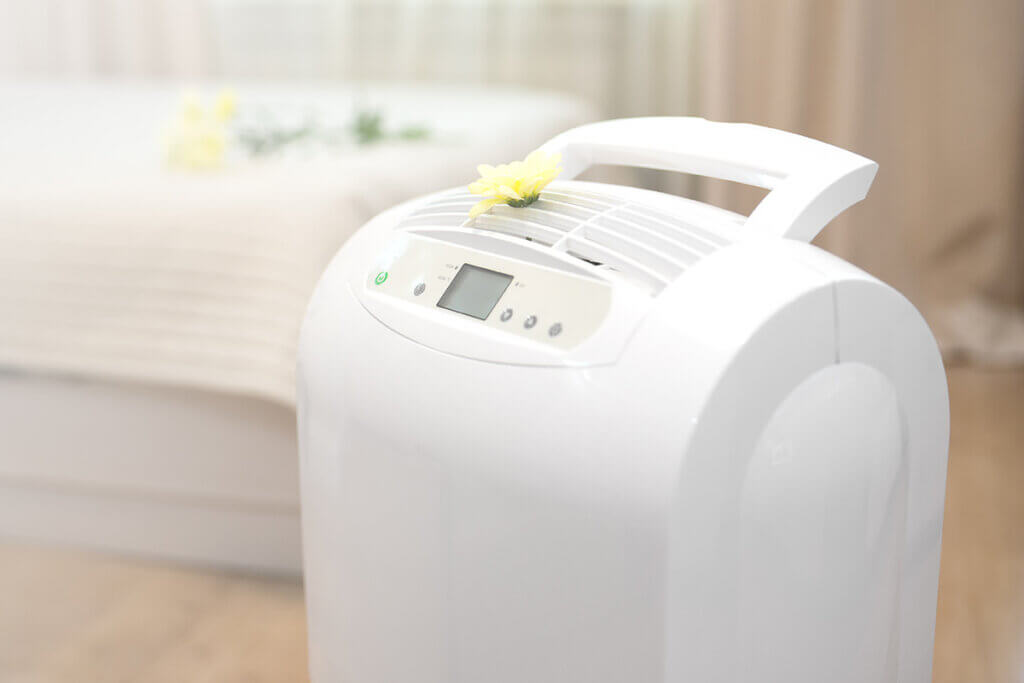
What else can an air cooler do?
An air cooler is more than just a fan. It cools the air and thus creates a better indoor climate. Many devices can offer additional functions: Some models filter pollen and fungal spores from the air, while others can influence the humidity of the room climate. Some air coolers also have integrated aroma diffusers that distribute a pleasant fragrance in the room. However, as the range of functions of the device increases, so do the purchase costs.
The difference between air coolers, air conditioners and fans
On hot summer days, the first choice is usually a simple fan. It is quick to set up, inexpensive to buy and very flexible in use. There are various devices that have several ventilation levels and perhaps even circulation functions. In fact, however, the fan only causes the air to swirl. This can have a refreshing effect, but does not reduce the room temperature.
The air cooler combines the fan with a water tank. This contains cold water, which is supposed to cool the air. Depending on the device, ice cubes can be added or cooling packs from the freezer can be used directly. Air coolers are similarly flexible as fans. Due to the evaporation effect used, they actually cause a real reduction in room temperature.
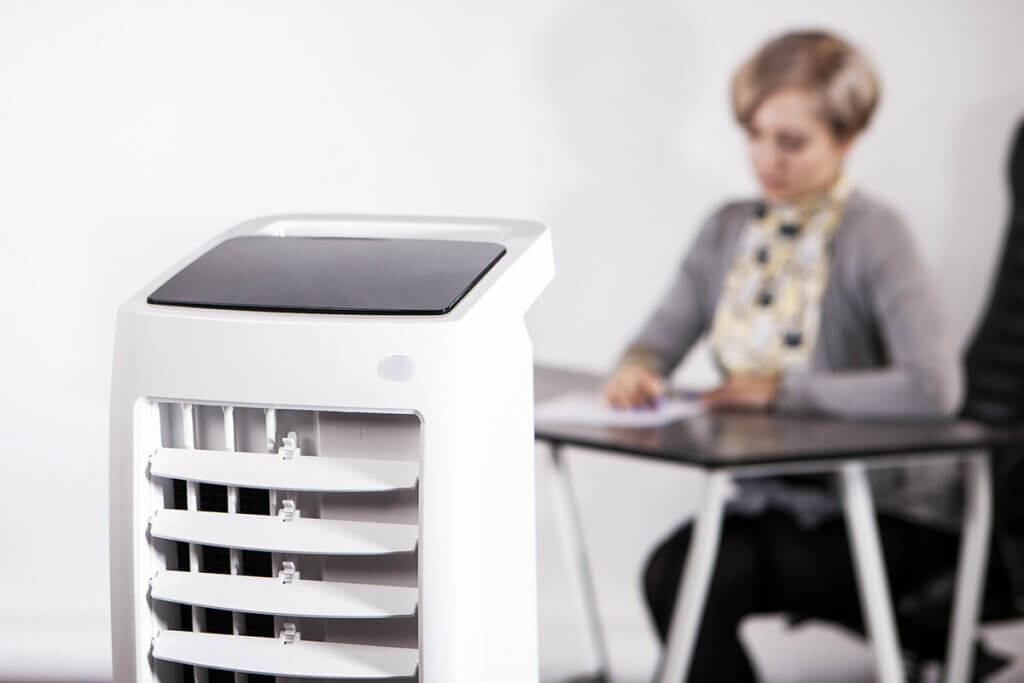
Air conditioning is the third option for cooling in summer. It is less flexible than the first two devices. Even mobile air conditioners are tied to a location near the window by an exhaust hose. The warm air is drawn in and cooled by means of a chemical coolant. The warm exhaust air is conveyed outside through the hose. The cool air is returned to the room. In this way, air conditioners reduce the room temperature more significantly than air coolers. However, they are very expensive and must be installed and regularly maintained.
The most important features at a glance
Fan: These units are inexpensive to buy and flexible in use, but only cause the air in the room to swirl and do not cool the temperature.
Air cooler: These are particularly flexible devices that work with evaporative cooling. The room air is cooled by a few degrees Celsius.
Air conditioning: These systems are expensive and complex to install. In addition, they are tied to a specific location and must be maintained. They noticeably lower the temperature by several degrees Celsius.
What types of air coolers are there?
Air coolers can be divided into several types. First, there is the classic air cooler, which works on the simple principle of evaporative cooling. A somewhat more sophisticated version is the all-in-one model, which offers various additional features in addition to the cooling function. Last but not least is the mini air cooler, which scores above all with its flexibility and mobility.
The classic air cooler
The classic air cooler works according to the evaporation principle. For this, this type of model needs a sufficiently large water tank. With some models, ice cubes or cooling packs can also be added to the water to increase the cooling effect. The classic air cooler works efficiently and is also quite quiet. Nevertheless, its effect cannot be compared with that of a conventional air conditioner. Depending on the performance of the model, it can lower the temperature in a room of about 65 square metres by about three degrees Celsius. However, the cooling capacity varies according to the size of the room. The unit is quick and easy to set up. Before switching on, you only need to fill the water tank and connect the unit to the mains.
Pro points
- Flexible use
- Easy handling
- Low power consumption
- Quick cooling of the air
- Quiet operation
Drawbacks
- Limited cooling range
- Comparatively low cooling capacity
- Regular filling of the water tank
The all-in-one air cooler
The all-in-one units offer various additional features. In addition to the classic function of air cooling, they usually offer functions for humidifying or dehumidifying the air. For example, they can compensate for very dry heating air in winter or reduce the humidity of muggy air in summer. Some units also have integrated filters that purify the air. This function is especially recommended for allergy sufferers. Air coolers with ionisers are even more effective because they filter out not only pollen but also fungal spores, bacteria and germs from the air.
Pro points
- Humidifiers and dehumidifiers improve the indoor climate
- Integrated filters against pollen and spores
- Flexible and mobile
Drawbacks
- Higher power consumption
- Higher purchase price
The mini air cooler
Mini air coolers are perfect for on the go. They are usually small tabletop air coolers in the shape of a cube. They can easily be taken on holiday, to the office or to the terrace. They usually have a USB port, so there doesn’t have to be a power socket nearby. A power bank or computer is also a suitable power source. Thus, the devices are particularly mobile and can be used at any time; you only need to be near the cooler to feel the cooling effect. Due to the low power, they do not provide large-scale cooling of the room air.
Pro points
- Ideal for on the go
- USB connection
- Very space-saving
- Reasonable price
Drawbacks
- Very short cooling range
- Low cooling capacity
What should be considered when buying an air cooler?
Some air coolers not only cool the air, but can also filter it or humidify or dehumidify it. Depending on the intended use and location, such extra functions are important purchase criteria. However, the list of features to be considered is much more extensive. Important points are, of course, the size and weight of the air cooler, the capacity of its water tank as well as the cooling capacity and efficiency. Some units also have a so-called swing function for better air distribution or a remote control for easier use. Other points to consider when choosing an air cooler are the operating volume and the price.
Well-known manufacturers: Hartmann | TROTEC | Sencor | Monzana | Syntrox Germany | Klarstein | MMZZ
Size and weight
The larger an air cooler is, the more power it can generally deliver. The range also increases with its size. However, more powerful units have a higher net weight.

Large air coolers
The tall tower air coolers, for example, belong to the large air coolers. With a height of about 100 centimetres, they are quite tall, but also very narrow. A base area of about 17 x 20 centimetres is not unusual here. This shape makes them ideal for niches or corners, where they do not get in the way. They can weigh several kilograms, which is why they are rather intended for stationary use.
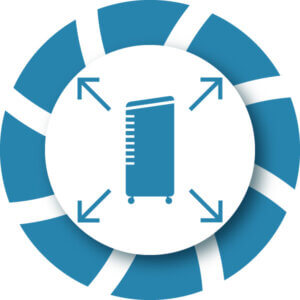
Medium air coolers
Medium air coolers are smaller than the large tower models. They are usually only about 70 to 80 centimetres high. However, their base area is somewhat larger at around 25 x 35 centimetres. Thanks to the built-in wheels and a weight of two to five kilograms, they can easily be moved from one room to another.
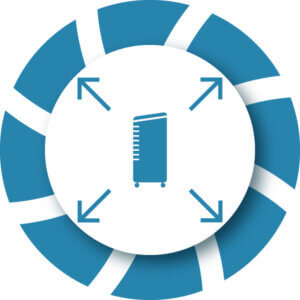
Small air coolers
The smallest models are also the most flexible units. They are usually square with dimensions of 10 to 20 centimetres and thus very space-saving. They usually weigh less than one kilogram and are easy to transport. However, they only have a limited range and cooling capacity; in rooms larger than 20 square metres, the small units reach their limits.
Water tank
The water tank plays a decisive role in cooling the air. As soon as it is empty, the air is only swirled by the fan. The desired cooling effect does not occur. The various water tanks usually have a capacity of 300 to 1,300 millilitres. The smaller the tank, the more frequently you have to refill water. Air coolers with a large tank, on the other hand, can often be operated throughout the day without you having to add water.
Filling the tank is usually very easy. Many units have a removable water tank that can be easily filled and also cleaned. You can use plain tap water here without any problems. If you want to support the cooling performance even more, you can fill the tank with ice water or add ice cubes in addition to the cold water.
Cooling capacity and room size
The electrical output of air coolers is usually between about 50 and 70 watts. However, how efficiently the unit cools also depends on the distance and room size. Smaller rooms can be cooled more easily and quickly than large rooms. Therefore, a recommended room size is always given with the various units. For most air coolers, this is between 15 and 40 square metres. Particularly powerful models are suitable for rooms up to 65 square metres.
Filter function
Many modern air coolers have a filter that not only cools the air, but also cleans it at the same time. The filter ensures fewer dust and dirt particles in the air and is particularly recommended for allergy sufferers. For particularly clean air, air coolers with ionisers are recommended. They also reduce the concentration of bacteria, fungal spores and germs and remove odours.
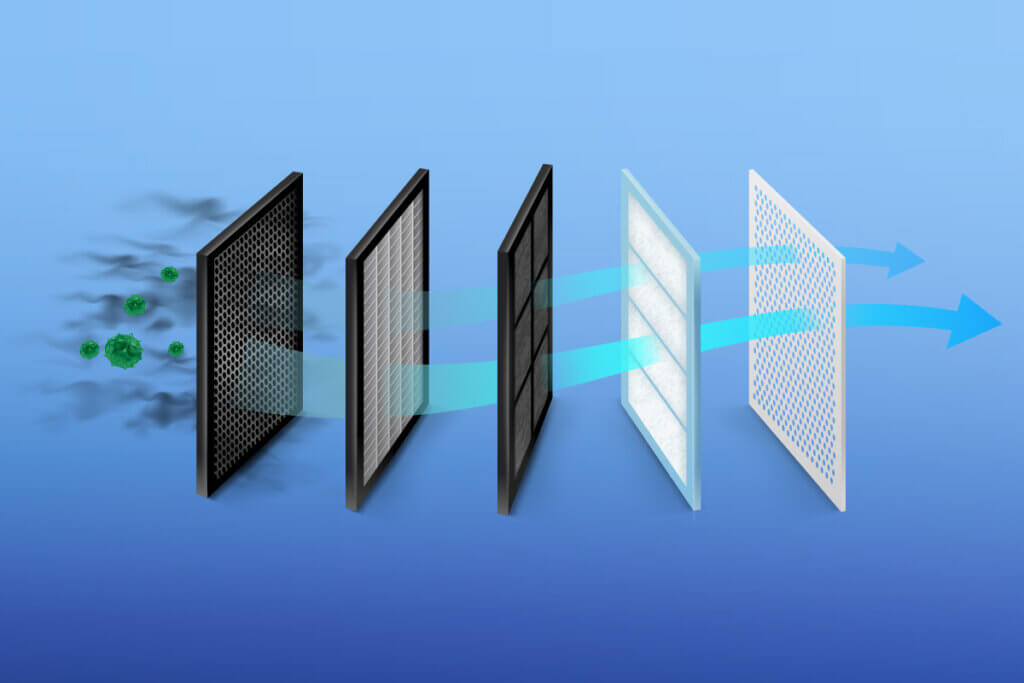
Air flow rate
The air flow rate is a decisive factor for air coolers. It indicates how much air the unit takes in and cools down again per hour. This value is measured in cubic metres per hour and influences the recommended room size for the respective air cooler. In most cases, the various models have an air flow rate of 100 to 1,500 cubic metres per hour. However, not all manufacturers specify this property for their units. To calculate how many cubic metres of air a room can hold, you have to multiply the height, width and length of the room. For example, an eight-metre long, five-metre wide and four-metre high room holds 160 cubic metres of air. Accordingly, a unit with an air flow rate of more than 150 cubic metres per hour is recommended.
Stages
Many of these air conditioners have several speed levels. While some air coolers only have a basic level, other models have up to three different levels. This allows you to adjust the air strength individually. The higher levels cool down the temperature more effectively, but are usually also louder and increase the power consumption.
Swing function
This function is now considered standard for many units. Thanks to the swing function, the air cooler moves from left to right, which distributes the cooled air better in the room. Some units also have fins that can be turned up or down to change the discharge angle of the air flow. This allows the air to be distributed as evenly as possible in the room.
Noise level
The noise level of most units is about 60 decibels; this value is comparable to the noise of a lawn mower about 10 metres away. However, there are also some quieter air coolers with a volume of about 50 decibels; this corresponds to the volume of birds chirping or soft radio music. In principle, the noise levels of air coolers are not dangerous, but continuous exposure to sound over long periods of time can lead to concentration problems.
Costs
The cheapest units are available for as little as 35 euros, but these are very simple air coolers without any additional functions. If you want something more and have demands in terms of performance and noise level, the price will quickly reach the three-digit range. Solid air coolers with a good price-performance ratio start at around 100 euros, but without additional functions such as dehumidification or cleaning of the air.
Tips for using an air cooler
Air coolers are much faster and easier to set up than air conditioners. Nevertheless, a few points should be taken into account so that the unit can work as efficiently as possible. In some cases, it may be useful to try out different locations to find the best place for the air cooler.
Step 1: The right location
The individual parts of the air cooler are quickly assembled. When choosing a location, it is important that it is not too close to a wall or other obstacle. The air must be able to circulate optimally to enable efficient cooling. The outlet opening should also always point into the room. Like classic fans, air coolers should not be aimed directly at the head and neck to avoid chilling and painful tension.
Step 2: Check the water tank
Once you have found the right place, you can get the air cooler ready for use. Before switching on, check the water tank and look for leaks; otherwise water could leak out and cause damage to the unit. Also check that there is enough water in the tank before each operation. If the air cooler operates with an empty water tank, there is a risk that the pump for moving the water in the cooling process will be damaged. Since the pump cannot always be replaced, a new air cooler would be necessary in the worst case. It is therefore better to check the unit once more and top up with water if necessary. Before refilling, make sure that the air cooler is disconnected from the mains. Otherwise there is a risk of electric shock. Once the tank is properly filled, you can connect the air cooler to the mains and switch it on.
Step 3: Close doors and windows
The different air cooler models are designed for specific room sizes to achieve the best possible result. If the room is significantly larger than the manufacturer’s specifications or is not separated from other rooms by open doors, the square footage will increase accordingly and the cooling capacity will be reduced. Open windows also reduce efficiency; if warm air is constantly flowing into the room, the unit cools steadily against it to maintain the climatic status quo, but without significantly changing the room temperature. If you do not buy a model from the outset that is intended for larger rooms and has a high cooling capacity, you should always make sure that all doors and windows in the room to be cooled are closed.
Step 4: Switch off
Many air coolers have a timer function. This means that the air cooler switches itself off after a preset time. Optionally, you can also pull the plug to disconnect the unit from the mains. If you do not intend to switch the cooler on again soon, you should pour away the residual water in the tank, rinse out the container and dry it. In this way, you prevent germs from forming in the water, which are then released into the room with the air. Refill the tank first before you switch the unit on again.
Step 5: Maintenance and care of the air cooler
Air coolers are considered low-maintenance and easy to care for. Users only need to regularly check and refill the water tank and keep the ventilation openings free of dust and dirt. The latter can simply be vacuumed with a hoover or alternatively wiped with a damp cloth. If the unit has a filter to remove pollen from the air, this must of course also be checked, cleaned or even replaced at regular intervals. The effort for maintenance and care therefore increases with the functional scope of the device.
Image 1-2: © FinalCheck | Image 3: © Aleks Gedeiko / stock.adobe.com | Image 4: © Grispb / stock.adobe.com | Images 5-7: © FinalCheck | Image 8: © Vectorman2017 / stock.adobe.com

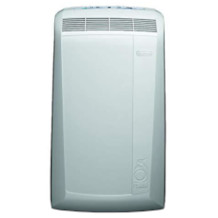
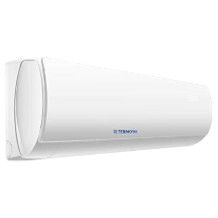
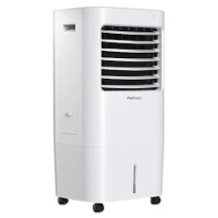
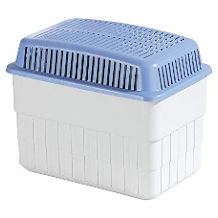
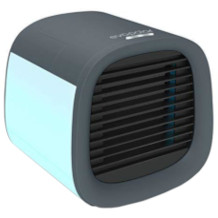
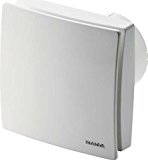
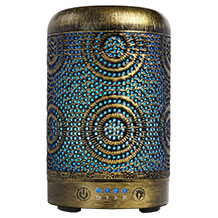
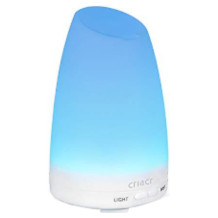

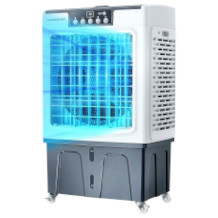
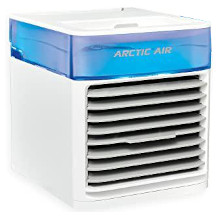

 3,340 reviews
3,340 reviews



